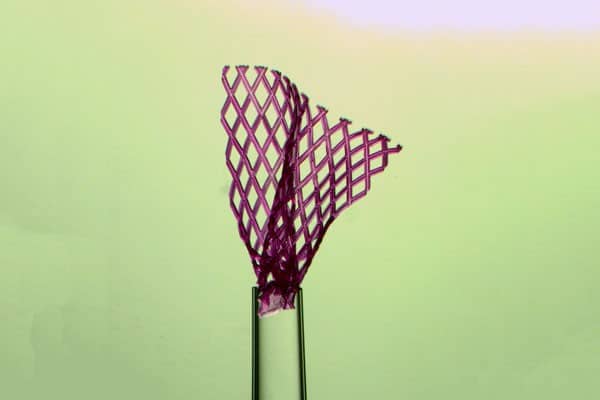A bandage made of heart tissue developed by U of T scientists

 Researchers at the University of Toronto have created an injectable bandage made out of lab-grown heart tissue. About the size of a postage stamp, the heart patch could be used to repair tissues damaged in heart attacks without the need for invasive surgery.
Researchers at the University of Toronto have created an injectable bandage made out of lab-grown heart tissue. About the size of a postage stamp, the heart patch could be used to repair tissues damaged in heart attacks without the need for invasive surgery.
Science has come a long way in helping damaged organs to get back on the path to recovery and repair, including for the heart, which can suffer tissue damage as a result of a myocardial infraction. And preventing the development of scar tissue on the heart muscle is a major focus, as scarring can impede the heart’s ability to pump blood.
To that end, cardiac patches have been devised that can be either stuck or stitched onto the heart, which can encourage the growth of healthy cells, blood vessels and tissues and allow for better transmission of electrical impulses across any scar tissue that does develop.
A bandage made of heart tissue has its complications…
The problem? Open-heart surgery to stick on the patch or scaffolding is not always an option, especially for heart attack patients whose heart functioning has just been compromised. “If an implant requires open-heart surgery, it’s not going to be widely available to patients,” says professor Milica Radisic, of the U of T’s Institute of Biomaterials and Biomedical Engineering and study co-author, in a press release. ”It’s just too dangerous.”
To get around the problem, researchers devised an injectable heart patch, made of a degradable polymer scaffold seeded with lab-grown heart cells. Just one square centimetre in size, the AngioChip is foldable yet has shape memory so that once it emerges from the needle, it unfolds, as seen in this video, so that it can cover the intended tissue.
So far, the researchers have been able to test their creation on both rats and pigs and have met with success, finding that compared with patches put in place by open heart surgery, the AngioChip produced equivalent results in terms of vascularization, microphage recruitment and cell survival.
“When we saw that the lab-grown cardiac tissue was functional and not affected by the injection process, that was very exciting,” says Miles Montgomery, PhD candidate in Professor Radisic’s lab, who has been working on the AngioChip for three years. “Heart cells are extremely sensitive, so if we can do it with them, we can likely do it with other tissues as well.”
The next step will be to assess the long-term stability of the patches and determine how well they aid in cardiac functioning. The team is also looking into using their injectable patch on other organs, like the liver. “You could customize this platform, adding growth factors or other drugs that would encourage tissue regeneration,” says Radisic. “I think this is one of the coolest things we’ve done.”
The Heart and Stroke Foundation reports that heart failure —the inability of the heart to pump blood effectively, most commonly caused by heart attack— is on the rise in Canada, with 600,000 Canadian currently living with the condition and 50,000 more being diagnosed every
year.

